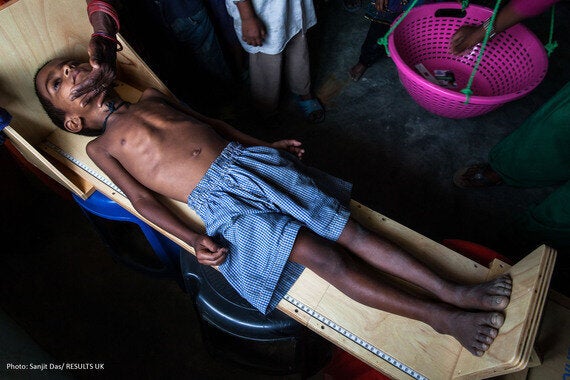In the UK this has been a week of big promises. With the general election just around the corner, we saw the launch of the manifestos of all three major political parties setting out what they will do to make life better if they are elected. And once the dust settles on the 8th of May, whoever ends up forming the next government will have the power to set both national and international priorities and make big decisions on behalf of all of us.
The ambition of vision and the accountability to the promises made by our elected officials is important. What they have promised and what they go on to deliver matters to us. And that is why I think another launch that happened this week is so crucial; the launch of the ACTION Nutrition for Growth scorecard.

RESULTS UK, as a member of the ACTION global health advocacy partnership, is proud to be able to bring this information together into one place so we can see, at a glance, how the world is doing.
This nutrition scorecard tracks the ambition and the delivery of the country donors who made pledges at the Nutrition for Growth event in London in June 2013 co-hosted by the UK Government, the Government of Brazil and the Children's Investment Fund Foundation (CIFF). This was a significant international summit, which brought together national governments, international agencies and private partners to make the political and financial commitments necessary to end hunger.
Globally undernutrition has been a tragically neglected development issue. Responsible for 45% of all preventable child deaths, it receives less than 1% of Official Development Assistance (ODA). In response, at the annual meeting of the World Health Assembly (WHA) in 2012, all countries of the world endorsed six global targets on nutrition to be met by the year 2025. These WHA targets tackle issue such as reducing stunting (low height for age) and wasting (low weight for height ratio), amongst other important targets.

The ACTION nutrition scorecard will make it easy for donors, civil society, and the public in all major donor countries, including Canada, America, and Australia, to hold their governments to account for their pledges. By providing a baseline measurement and a progress report for donors campaigners will be able to thank those who are on track and start to ask questions of those who could be doing more.
So what did the Nutrition Scorecard find? In general terms it is clear that to combat the problem of undernutrtion globally donors must not only meet their existing commitments but also considerably increase their investments to nutrition if the 2025 World Health Assembly targets are to be met.
The UK has taken commendable leadership on the issue of nutrition. The Nutrition for Growth event provided a much needed boost, with donors pledging $US 4.15 billion for nutrition specific programmes, such as micronutrient fortification, supplementation, and therapeutic feeding for acute malnutrition, and $US 19 billion for nutrition-sensitive programs which seeks to improve nutrition outcomes through interventions in other sectors, such as, agriculture or water, sanitation and hygiene (WASH) projects.
The UK itself made significant pledges at the event, including £655 million between 2013 and 2020 (additional to 2010 baseline spending), of which £280m was to be made available in matched funding to encourage other donors. Further, £604 million was pledged to nutrition sensitive interventions.
I am pleased that the UK is on track with its pledging commitments and is delivering on its N4G promises. This week the UK is co-launching the 'Power of Nutrition', a catalytic fund that seeks to mobilise $1bn to fight undernutrition, at the World Bank Spring Meetings. This is good progress that deserves to be celebrated.
However, tracking the UK's progress on nutrition sensitive spending has been complicated. The biggest challenge is that these programmes do not always have clear nutrition outcome indicators to facilitate accountability, and they should.
What should our new incoming government do to show it continued commitment to save millions from the long-term adverse effects of undernutrition?
An upcoming nutrition summit in Brazil in the summer of 2016 will be an essential moment for donors to build on the momentum created in 2013 and to report on the progress that has been made.
Specifically, the UK's high-level support for nutrition has shown it to be an energetic and active champion for the issue. To send even stronger messages and have even bigger impact, the UK should first aim to spend its Nutrition for Growth commitments sooner rather than later. This will break the vicious cycle of undernutrition, illness, and poverty for millions of women and children, sooner.
Second, the UK should continue reporting on progress to meet its ambitious commitments on both nutrition specific and sensitive interventions, thereby strengthening donor transparency
Importantly, the UK should be proud of enshrining in law our commitment to spend 0.7% of our National Income on Aid. That stable, long-term commitment to aid allows for longer-term planning around issues such as nutrition where it is sometimes hard to show immediate impact - new and more nutritious crops, for example, are only planted once a year and eaten over the course of many months.
I for one want ownership of the promises that are made on my behalf, and to have access to the accountability mechanisms to ensure they are met. The ACTION Nutrition Scorecard does just that. It's worth exploring just how your own government is doing, and making sure that all our governments' promises to the world's vulnerable and malnourished are being kept.
